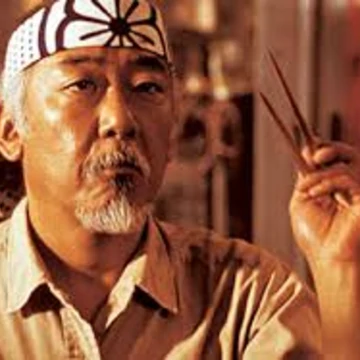Ask any parent and they’ll tell you that they can think of nothing more important than their child’s safety. To that end, many parents wish to enroll their child into Taekwondo, so they can help protect themselves. But is that the best self defense for kids? What about Judo or Karate or MMA? This guide will help the concerned parent make this important decision.
As a general rule, the best self defense for kids is not a martial art, but awareness. There is a time and a place for combat skills, and styles like Muay Thai, Krav Maga, Karate, and Judo will help keep your child safe, but teaching them to trust their gut instinct, and act on it, is far more important.
With that said, if you’d like to understand why certain styles of martial art are better suited for specific ages and by gender, then keep reading.
Self Defense vs. Martial arts
Before we get into whether your son or daughter should take White Crane Kung Fu or Shotokan Karate, we need to understand that “self defense” is NOT the same thing as “martial arts”.

The purpose of martial arts training varies widely, from health and fitness to spiritual enlightenment, and while even competitive martial arts contains elements of self defense, it is critical that you understand that most of what your son or daughter would learn in a gym or a dojo will teach them very little about actually remaining safe from harm. That is because martial arts training focuses on what to do when the bad guy confronts them, but has nearly nothing to say about how to avoid even being in the bad guy’s sights.
Self defense, conversely, involves a much broader subject matter and requires a more varied skill set, such as: danger recognition, social awareness, de-escalation, and yes, combat skills. Combat skills is, however, listed last because it is the final line of defense. If your child needs to employ them it means they missed every previous opportunity to ensure their own safety and even if they emerge the victor, it is very likely that they may be seriously injured in the process. Self defense seeks to prevent this outcome by focusing on what your child needs to do before violence even becomes a possibility.
“Great. So where do I go to sign my kid up for a self defense class?” you might be asking.
Well, not so fast. “Self Defense” is somewhat of a nebulous term and gets bandied about pretty freely. Go to a sport-oriented Taekwondo school and ask if they teach “self defense” and they’ll confidently tell you they do. And they’re not wrong, but they’re also not really right either. In fact, even among “self defense” styles like Krav Maga or Combat Hapkido, nearly all of the training will be about combat skills, making it no better than an ordinary martial arts class! (This, I believe is mostly because no one wants to pay $120/month to sit down and be told “obvious” things like not to walk down dark alleys or get into cars with strangers. You know, the things that will actually keep people safe. No, for that kind of money they at least want to learn how to break a guy’s elbow.)
If you’re starting to feel like this is hopeless, don’t worry. Before the end of this article you’ll have a firm understanding of what constitutes the best self defense for kids and how you can make sure your child has learned it.
The Sensei

I will be blunt about this: the teacher matters more than the style. A Wing Chun “sifu” (teacher), with a private security background, will know more about actual self defense than any pro MMA fighter in the world. The instructor need not even have a relevant professional background in order to pass on valuable lessons and skills. In fact, many ordinary martial arts instructors devote a part of their daily classes (or hold special training events) wherein they emphasize critical “soft skills” like how to listen to that quiet voice in the back of your head, warning you of danger. This isn’t something that his governing organization requires of him, it’s something he brings to his own school because he values the lives and safety of his students. If you are lucky enough to find a sensei like this, I recommend signing up right away.
There are some additional steps to take when vetting an instructor that you must take.
- Check out the teacher’s pedigree – Where did he learn what he’s claiming to teach? Is he a part of a larger organization? If so, contact them and inquire as to his standing. Ask if he has had any complaints or commendations. Repeat this for each of the schools co-instructors.
- Visit the school before you sign your child up – Is it clean? Well lit? Friendly environment? Lots of trophies displayed (this would indicate a sport-centered training, rather than actual self defense)? Do the children your child’s age seem happy and engaged?
- Investigate the school locally – If the school has had complaints from parents, you are sure to find it on places like Yelp or Google. (Be aware that even the best schools can’t make everyone happy. You should expect to find some whining; disregard this and look for bigger things like dangerous practices or signs of predation.)
- Get a background check – While small schools may not provide this free of charge due to the cost, many schools will provide recent (6mo or less) background checks on all of their instructors. If they do not, then you must obtain one BEFORE you enroll your child. Remember, your son or daughter will be spending a great deal of unsupervised time with this adult. You must do all you can to ensure this person is safe and responsible. And immediately leave if an instructor is offended or becomes aggressive when you ask for a background check.
- Trust your gut – If something feels “off” then leave. Don’t rationalize the fear. Don’t “be polite”. GET. OUT.
Now that we’ve covered the important difference between martial arts and self defense, and touched on how to select an instructor for your child. it’s time we jumped right in and found out what’s the best self defense for kids. I have divided the sections based on gender and age group since, obviously, the risks that a 4 year old girl faces are very different than a 16 year old boy. This, as I’m sure you’ve already figured out, means that the best style for your child actually varies by age and gender.
I have further divided each section by the following, so as to more specifically address the common areas where a parent feels their child might need self defense skills:
- Anti-Bullying – Some kids are jerks. Often they’re victims of a broken home or abuse, themselves, but just as often he or she simply wants to build themselves up by putting others down. Bullying tactics vary by age and sex and its important to understand them before we can determine the best self defense to counter it.
- Stranger Danger – While, statistically, the world has gotten safer, stats do not comfort anyone whose child has been kidnapped or harmed by a stranger or acquaintance.
- Street Safety – “Street” might mean playground or parking lot as often as it means actual streets. What I’m talking about are the areas where your child will not be in a more tightly controlled environment, such as a classroom, where your child might encounter potential dangers of all ages. Places like this might be traveling between home and school, working at their job, hanging out with friends, etc.
Age 3 – 9 Boys & Girls

- Anti-Bullying: At this age boys and girls face similar a similar type and intensity of bullying. This will usually include name calling, exclusion from group activities, rumor, and other forms of non-violent verbal harassment (though I do recall exchanging a few punches with neighborhood boys when I was around 7 or 8). Avoiding becoming a target here involves proper socialization, self confidence, and not appearing too different to the children around him/her.
- Best Self Defense Styles: Taekwondo, Karate, Wrestling, Jiu-Jutsu. At these ages it doesn’t so much matter what styles they study because self confidence and socialization are the main byproducts we are after and each of them are going to provide that for your child. I will, however, point out that Taekwondo might be the best choice since it is already so popular with parents of young children that it’s more likely they are going to adapt their classes to support the unique needs of this age group.
- Stranger Danger: Most kidnappings occur not by a stranger but by a family member, often in a custody dispute. No martial art is going to cover avoiding abduction by relative, but many schools that specialize in teaching young children repeatedly teach them to avoid being drawn into conversation with strangers and never to leave with them. You might also contact your local police dept and inquire if they have any resources for you to utilize.
- Best Self Defense Style: Taekwondo and Karate. TKD wins again because they are more likely to specialize in child safety. It should be said, however, that many other styles have followed suit and it is almost as common to see a children’s Jiu-Jutsu class that also teaches these lessons.
- Street Safety: Back in my day this was more relevant. I recall roaming all over New Mexico with my siblings, completely unsupervised by any adult. We encountered snakes, coyotes, and more than once a radioactive gorge (don’t ask). Fights between children were more likely because there were no adults to break them up. Today, however, children are more closely supervised but that doesn’t mean that you should ignore this risk. This is the best age to begin to teach your child to recognize signs of trouble and how to escape.
- Best Self Defense Style: Wrestling and Jiu-jitsu. Should your child find themselves in a good old fashion scrap with a kid, either wrestling or JJ will help them gain the upper hand and control the aggressor, even if he or she is being accosted by a bigger child.
Age 10 – 13 Boys
- Anti-Bullying: The best way to avoid being bullied is to avoid looking like a victim. Continue to build confidence in your son by engaging him in achievement-oriented activities. This also includes building speaking confidence as well. You’ll also want to monitor his friend group (or ensure that he builds one). A bully’s efforts to taunt and belittle your son are far easier to ignore when he’s got a core group of friends to provide social approval. This would also be the proper age group to teach your son about how (and how not) to talk to girls, how to dress, and proper grooming. This might seem unrelated to self defense, but remember that bullies will weaponize any apparent “weakness”, whether it’s your son’s choice of clothing, early teenage body odor, or being the only one to the 6th grade “prom” without a date.
- Best Self Defense Styles: Taekwondo, Karate, Wrestling, Jiu-Jitsu, “Foot-Fu”. Each of these styles will build upon the confidence he’s learned from his earlier training, particularly TKD and Karate, since there are times when your son will be demonstrating techniques and kata alone to the entire class, allowing him to grow comfortable with “the spotlight”. Wrestling and Jiu-Jitsu will be particularly useful for helping your son to subdue a physical aggressor, even if he’s bigger and stronger. And finally, you should teach your your son, in the words of the greatest Karate sensei of all time, “Best way to avoid punch no be there.” In this situation it means teaching your son that he doesn’t need to fight just because his bully is spoiling for one. Exercising some “Foot-Fu” to walk away from a fight is nearly always the superior choice.
- Stranger Danger: Children of this age are gaining more autonomy and will be itching to be out from under his parent’s hawk-like gaze. Knowing your child’s friends will help you weed out individuals that might have dangerous associations (an older brother fresh out of jail, a “friendly” neighbor that asks for help inside his house, etc). You can’t cover everything, so this is the time to re-emphasize the lesson of trusting your son’s gut when it’s telling him that danger is near.
- Best Self Defense Style: Situational Awareness, “Foot-Fu”, Judo. Not having his neck constantly craned over his phone and ear buds jammed in his ears will help him be aware if someone is getting too close. And, failing that, running-the-hell-away is the best strategy. But if your son can’t run away, or is protecting a sibling (etc.), then there are dozens of Judo techniques that will allow him to topple a larger aggressor before he can then escape.
- Street Safety: Typical violence a boy of this age might encounter is low-level from peer-aged boys. Status seeking BS or, as was the case in my youth, having a big mouth, are common ways that your son can become a target of a near-age-peer on the street. This warrants having the basics of combat: striking, grappling, throws, and ground-work. For adult aggressors, however, escape is almost always the only appropriate choice.
- Best Self Defense Style: Muay Thai, Judo, Jiu-Jitsu, Krav Maga, “Foot-Fu”. Krav Maga is an Israeli martial art that bills itself as a “self defense style”. It emphasizes avoiding conflict until it is unavoidable, then blitzing your attacker with a series of fast and devastating strikes toward vulnerable targets (eyes, groin, throat, etc) before running away. Krav Maga does include ground-work, but quality of instruction varies depending on the instructor so I recommend adding a grappling art like Jiu-Jitsu or Judo to help topple larger enemies that could be too tall for your son’s reach.
Age 10 – 13 Girls

- Anti-Bullying: There can be many reasons for a girl to get bullied for this age group, but in listening to dozens of women, young and old, I’ve determined that a large the cause of girl-on-girl bullying stem from standing out. This might be in academics (classic), athletics (less common), appearance (clothes, hair, ethnicity), or wealth (whether an abundance or a dearth). Competitions for power might also play a role. Your child might be perceived as a rival if she has shared friends as the current “Queen Bee”. Exclusion and reputation destruction are common tools used in these instances.
- Best Self Defense Style: Obviously if your child is struggling in some area (academics, athletics, etc.) you will help them avoid being bullied by helping them improve. But your child might also get bullied for demonstrating excellence too. The lesson here is to stand out less. Whether its avoiding wearing the best fashions around poorer students, not upgrading her phone every year, or helping her choose a hair style that fits in better with her peers.
- Stranger Danger: The previous girl’s section about Stranger Danger still holds true. However, girls in this age group are entering the adolescent stage of life and are going to become targets for a different kind of predator. Truth be told, sexual predators are a danger no matter the age of the child, but adolescence is a time when girls especially become at risk due in part for their desire to be autonomous and away from their parents. And your daughter faces risks even from non-predator peer aged boys (especially for parents who let their early adolescent daughter’s “date”).
- Best Self Defense Style: Hapkido, Jiu-Jitsu, Judo, Krav Maga. The first 3 are grappling styles that specialize in joint-manipulation. This is critical for girls since most of the physical threats they’ll face are going to be within grabbing distance.
- Street Safety: Girls in this age group aren’t known by criminals to be carrying items of wealth (except perhaps a phone). As such, the type of predator she is more likely to encounter is one who wishes to do her physical or sexual harm. This isn’t always the “pervert in a windowless van” or the “rapist in an alley” we imagine. Sometimes it’s the funny and friendly older brother/sister/mother/father of a friend. Sometimes its a coach, a teacher, a relative.
- Best Self Defense Style: Safety is usually found in numbers. This is true for zebras and it’s true for people. But you also need to know who your daughter is hanging out with. Get their names and their numbers from your daughter. Create a contact list including parents names and numbers and keep it updated. And teach your daughter about “danger zones” like unlit areas, parking lots, elevators, stairwells. As well as how to recognize dangerous environments like parties where other kids are doing drugs, drinking, etc. Tell her that escape is her best option, even if all her friends complain that she’s being uncool by leaving, and you tell her that she can always call you to pick her up from anywhere. This might mean she calls you for a ride home at 11pm because the sleep over she was attending just got weird when her friend’s older brother just got home and started getting drunk. When you pick her up you congratulate your daughter for her good judgement and you thank her for trusting you.
Age 14 – 17 Boys

- Anti-Bullying: Getting bullied for boys of these ages can be something as seemingly insignificant as wearing off-brand shoes, talking to the “wrong” girl in class, or (again, in my case) having a big mouth. The level of bullying will generally not go beyond verbal, and while that might seem like a good thing, most guys of this age would rather get in one fight and be done with it than endure constant public humiliation.
- Best Self Defense Style: Proper socialization and emotional security remain important to reduce the chance that your son will be targeted by a bully, and to deflect some of the effects of said verbal bullying. Should your son be involved in a fight with his bully, he will be well served by having trained with a grappling and striking art such as Jiu-Jitsu and Karate. Be warned, most schools treat fighting as a criminal matter nowadays, even if both boys are relatively unharmed and neither wish to involve the police. So, while I will always advocate for the right of self defense, it is important to talk with your son about the possible fallout of a violent encounter, even if he’s the victim.
- Stranger Danger: In this age group, some of the more common dangerous strangers are “new friends”. The kind of “cool” guy, maybe a few years older, who has a really hot girlfriend, drives a sweet car, and seems to have a lot of cash but doesn’t appear to have a job. For some reason that your son can’t quite figure out, this cool guy wants to be his friend. Even the cool guy’s girlfriend flirts with your son, just a bit. He even invites your son to a party or two (not that he’ll tell you). Your son is finally feeling accepted and socially validated; and by a really cool bunch of older kids! Everything is going great and your son feels like he’d do anything for his new friends. Then the cool guy asks your son for a very small favor; drive him somewhere, meet him some place, deliver this bag to a guy he’s never met, etc… You can see where this is going.
- Best Self Defense Style: Protecting your son from “new friends” like these starts at home. While a young man needs more than acceptance and validation from his parents, it is absolutely critical that he receives that from you. He will be less vulnerable to this kind of temptation if he has a positive group of friends as well. This is something you need to an active (but invisible) hand in. In addition, you should still be talking to your son about how to recognize threats (especially a smiling threat) and to trust and act on what his gut is telling him.
- Street Safety: Boys this age tend not to have much money, but what little they have is often spent on high-ticket accessories such as popular shoes, gold chains, designer hats, cool phones, watches, etc. All of these scream “STEAL ME” to low-level criminals. These types of attacks can happen in broad daylight, but more often happen in secluded places, away from the public eye.
- Best Self Defense Style: “Don’t flash your cash”. If he’s not wearing anything to steal, odds are better your son is going to be left alone. You should also be teaching your son to be aware of his surroundings, and to avoid risky areas that would offer opportunity for someone looking to harm or rob him. Places like dark parking lots, parking garages, stairwells, elevators, etc. Finally, teach him that if a street thug pulls a weapon and wants his watch, phone, etc. then he should give it up. A thug knows that police are less motivated to him if he only stole property than if he shot or stabbed his victim as well. So in most cases your son will be unharmed if he “buys” his safety for whatever he might have in his pockets.
Age 14 – 17 Girls

- Anti-Bullying: I don’t envy girls of this age group. They spend all their time on social media feeling bad because they’re not as pretty as the 0.01% of internet-celebrities, then they devote all their time to trying to emulate that beauty only to get bullied for being prettier than the “Queen Bee” of her friend group! Or maybe she’s getting bullied because she doesn’t keep up with fashion trend. Or she’s too fat/skinny. Or her breasts/butt/hips/lips/nose/feet/hands/forehead are too big. Or too small. Or…
- Best Self Defense Style: Emotional security and limiting social media time will do more to protect your daughter against these kinds of threats than 100 years of Judo lessons. And if the problem is an easy fix (such as damaged hair or getting in shape) then definitely help her address those.
- Stranger Danger: Your daughter, even if she’s a “nice girl”, is going to be exploring her sexuality. Unfortunately she’s got almost no idea what she’s doing and, as such, she may place herself at risk with boys her age by not appreciating how vulnerable she’s become by getting into that guy’s back seat (“Just to make out”, she tells him). Or not understanding that boys her age are just as clueless and that even a non-predator boy she’s known for years can go too far and hurt her, physically or psychologically.
- Best Self Defense Style: “Being rude“. We socialize our children from the moment they’re born. For girls, that socialization usually is centered around “being polite“, “not making a scene“, and “being nice“. These types of attitudes are perfect when your daughter is meeting new friends or trying to get along with a difficult boss at work. But these mindsets also get women killed everyday when they’re still used in the face of danger. You need to read “The Gift of Fear” by Gavin de Becker. You need to give it to your daughter to read. But to summarize one main idea from the book, the amygdala (the”old” brain) usually knows when it’s in danger. This is that voice in the back of your head telling you that “something isn’t right“. But our prefrontal cortex (the “new” brain) tries to override it. It says “Don’t make a scene. Be polite. He probably doesn’t realize how uncomfortable he makes people. Just be nice.” By the time the “new” brain recognizes danger, it’s often too late to just run away. At that point you have to hope that your daughter can employ the years of Jiu-Jitsu training you’ve made her take to surprise her attacker and break his wrist/elbow/etc. before fleeing.
- Street Safety – Humans dress to send signals to other humans. Like peacocks. A man in a business suit signals, “I am rich, important, and successful“. It is a message of power. A thug with his pants below his ass and a gun in the waist band signals, “I am dangerous and I reject your social norms“. Again, a power message. Young woman often signal their own power by wearing a tight dress and high heels that says, “I am beautiful, desirable, and you should want me“. Unfortunately, this is exactly the kind of signal that rapists are attuned to. Muggers and robbers, too, for that matter since her high heels signal “I can’t run away from you“. Is all this unfair? Is all this unfeminist? Yes. But since when did avoiding criminals have anything to do with feminism or fairness?
- Best Self Defense Style: Groups, Awareness, Common Sense, “Foot-Fu”, Judo. Being in a group, situational awareness and common sense will keep more girls safe. It is difficult to control and victimize multiple people at once, so not being alone is a big deterrent. Having the awareness to avoid poorly lit areas. Having the common sense not to get into the car with the older brother of a friend if he appears to be drunk or high. And being taught to appear on alert (head on a swivel, calmly scanning for dangers) will let experienced predators know that she’s not going to be an easy mark. Failing all of these, teaching her that she needs to run the hell away is the correct and appropriate response. Finally, in the rare occurrence when she is unable to run, (and assuming the assailant doesn’t just want her property), surprising him with a Judo throw and then escaping is the best choice.
Final Round
Martial arts like Judo, Karate, and Jiu-Jitsu have their place in self defense for kids, but the first line of defense is awareness and avoidance. Teach your child how to recognize danger, to listen to their gut, and have the confidence to act on what their gut is telling them to do.
It is also important to recognize that teaching your son or daughter self defense is not a “box to be checked”. As they grow and mature, the types of dangers they face change. You will need to have repeated talks with them about the kinds of risks that they will encounter as they enter each new stage of life, and how best to mitigate those risks. So with that in mind, ask yourself if it’s time you had another talk with your child.
Photo Attribution:
- Photo by Elena Mozhvilo on Unsplash
- “Mr. Miyagi” (Pat Norita), “The Karate Kid” 1984, Columbia Pictures – Sony Pictures Entertainment
- Photo by Mikhail Nilov from Pexels
- MissLunaRose12, CC BY-SA 4.0 https://creativecommons.org/licenses/by-sa/4.0, via Wikimedia Commons
- Photo by Randy Laybourne on Unsplash
- “Don’t be Nice”, Ethan Graves, www.martialworldacademy.com
- Photo by Luis Villasmil on Unsplash
